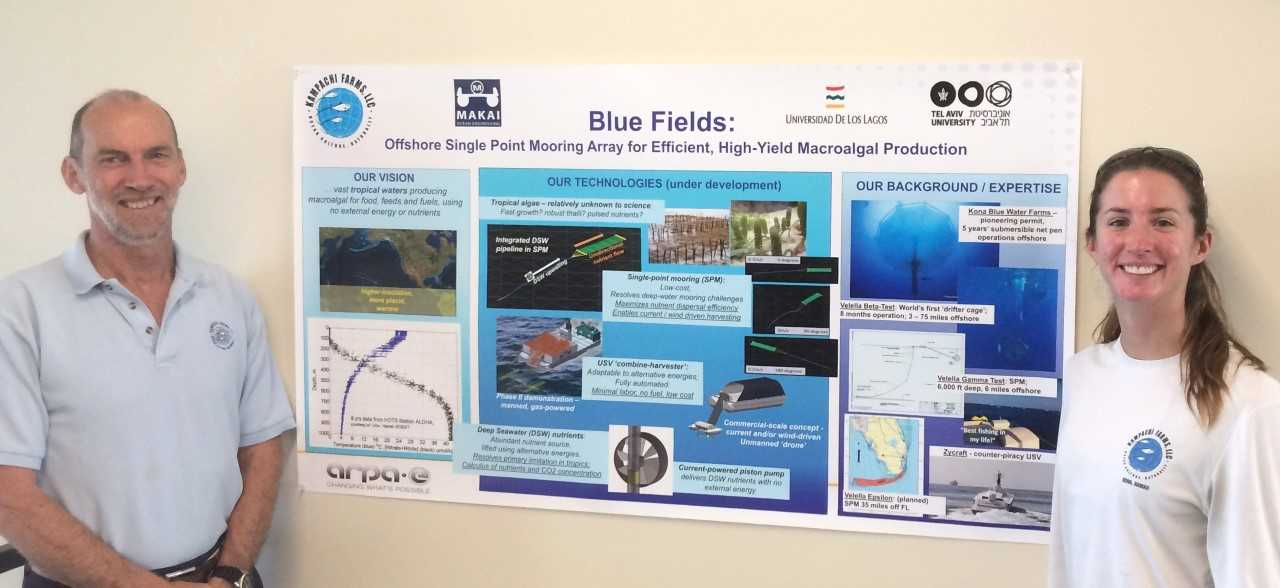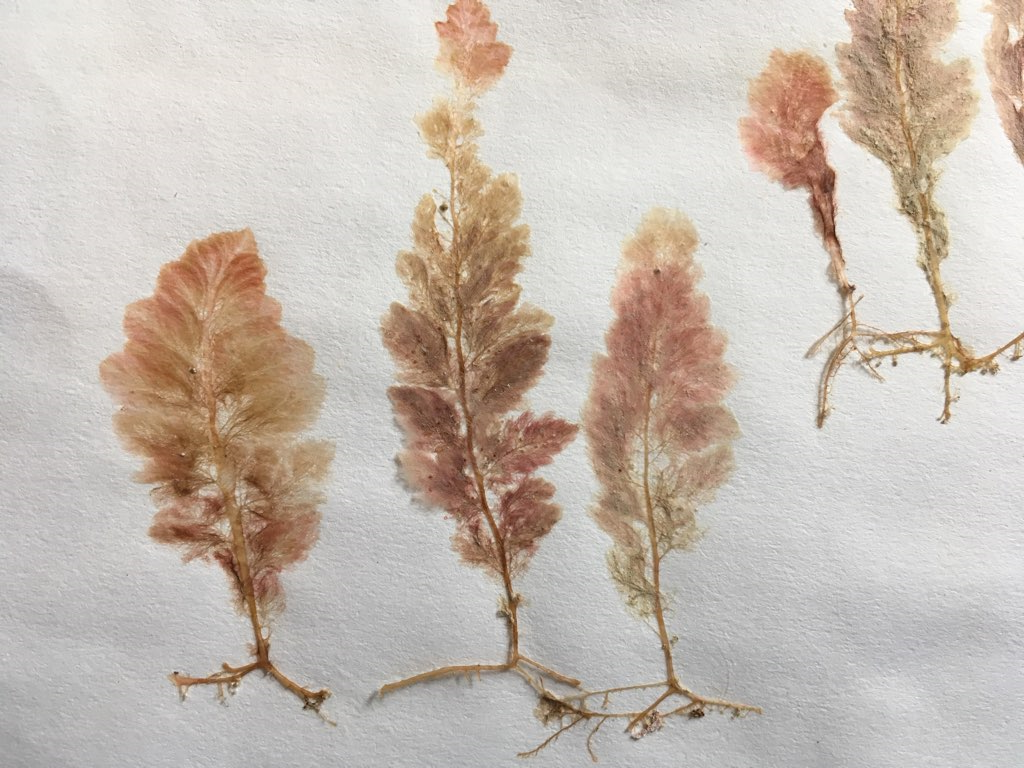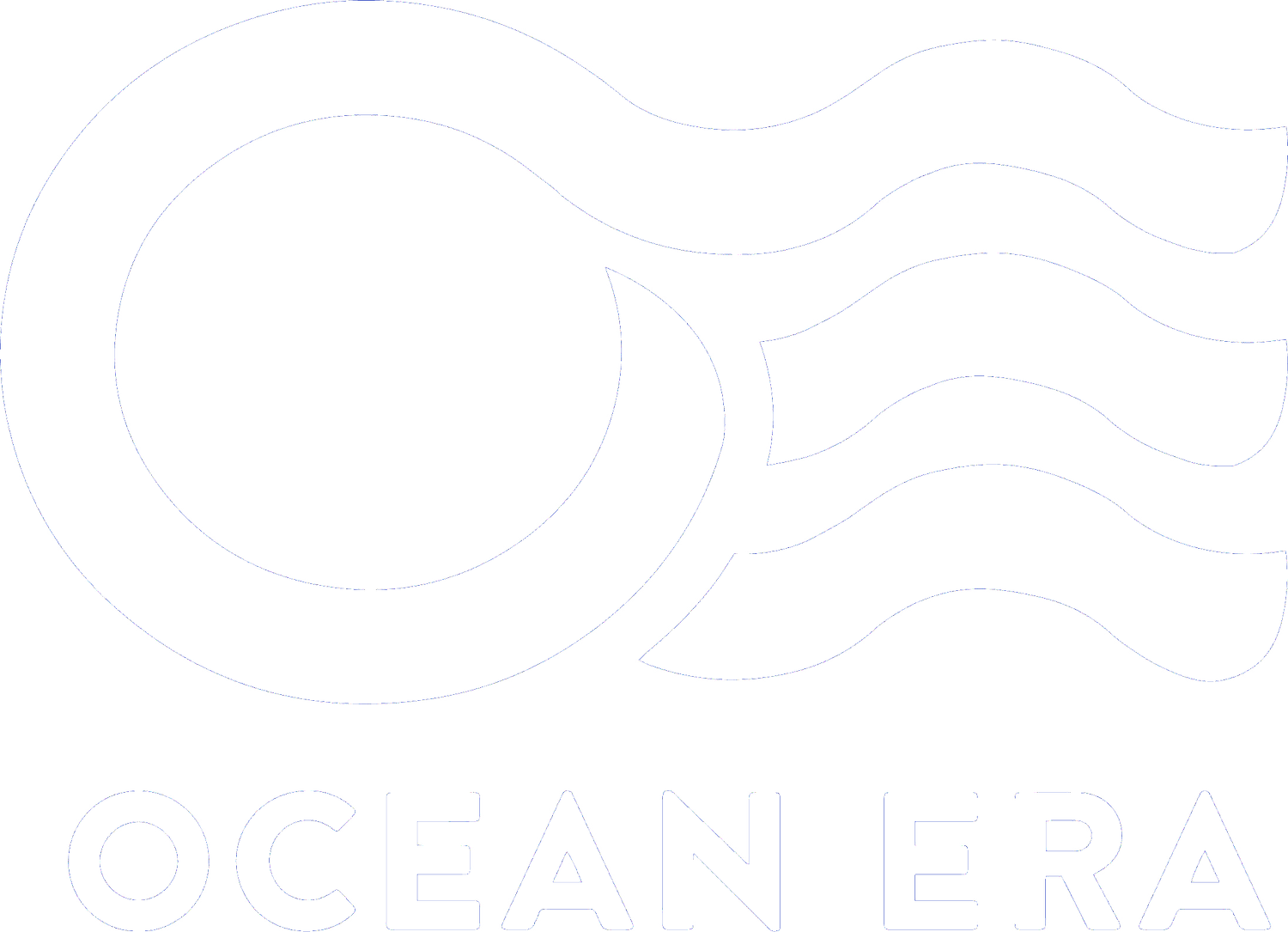Seaweed to the Rescue: Foods, Feeds, and Fuel
Macroalgae, or seaweeds, have been around for a very, very long time; fossil evidence of a red macroalga has been dated between 1 and 1.6 billion years ago (1). Seaweeds must be doing well for themselves, if they’ve survived this long! It’s this realization that has catalyzed phycological research ranging from nutrition, skin care, pharmaceuticals, and more recently, in aquaculture, alternative fuel sources, and carbon sequestration strategies (2-6). Seaweed is even being experimented with as an alternative to plastic packaging (7). Macroalgae have been overlooked by most of the world for far too long, but all of this is now changing, and rapidly. Although seaweed is not a new research topic, significant efforts and investments are being made to further explore its potential.
Before all of this, though, seaweed has been a consistent source of food. The farming of macroalgae is thought to have originated in Japan between the 17th and 19th centuries (8); harnessing the value of seaweed mariculture with no need for using arable land, freshwater, or artificial nutrients, all while introducing a way to help absorb excess nutrients or carbon from the ocean.
Seaweed farming at Nusa Lembongan, Bali. © Jean-Marie Hullot
Macroalgae mariculture is a huge commercial operation in Southeast Asian countries like Japan, China, Korea, and the Philippines. The west is slowly catching on. In Hawaiʻi, seaweed has been utilized for hundreds of years. We have over 500 species of seaweeds here in the islands, and our edible macroalgae, or limu, are savored in local cuisine. As the most remote archipelago in the world, there is a lot of ocean to go around—and this ocean is deep. On the west side of the Big Island (Hawaiʻi Island), the water depth plummets to 6,000 ft. (1,829 m), a mere three miles (4.8 km) offshore. West Hawaiʻi’s Natural Energy Lab of Hawaiʻi Authority (NELHA) supplies a consistent source of seawater pumped from two locations: surface seawater (SSW) from 69 ft. (21 m) and deep sea water (DSW) from 2,211 ft. (674 m). With a broad selection of native algal species, access to NELHA’s DSW and SSW on tap, Hawaiʻi is an ideal location to research mariculture opportunities. Our Blue Fields Project is designed to do just that. Funded by the Department of Energy’s MARINER Program (Macroalgae Research Inspiring Novel Energy Resources), the Blue Fields project proposes to test a single-point mooring array for high-yield macroalgae culture (9).
The two major challenges for offshore macroalgae culture in Hawaiʻi are species selection and offshore nutrient delivery. Very little research has been done into the culture of Hawaiʻi’s native species, and as a result there is limited knowledge of their growth requirements. There are demonstrable (and demonstrated) risks with introducing non-native algal species, which may compete with native ones (10). We will therefore only be using native species in our growth trials. Tropical surface waters are also nutrient poor, which explains their clear blue color. However, Hawaiʻi’s bathymetry (the steep offshore slope of the islands) means that nutrient rich DSW is readily available, and we plan on testing this as a means to stimulate macroalgae growth.



Before the Blue Fields offshore array becomes a reality, a series of land-based trials at our Kona research facility will establish which species may be best to grow, and what they need to thrive. In the coming months we will grow our limu with various mixes of deep seawater and surface seawater, and with different timed pulses of nutrients to determine the needs for scalable production. Our partners at Makai Ocean Engineering, are designing a wave-driven upwelling system to lift DSW nutrients to the offshore array. Once we have selected our target species, the team will finalize designs for a pilot-scale single-point mooring, long-line macroalgae array that harnesses wave, current and wind energy for nutrient delivery and harvesting. We also envisage testing a human-operated prototype algal harvester, with the long-term goal of it being a fully autonomous, reliable, high-yield cutting mechanism (think underwater ROV lawn mower). Through a competitive selection process, Blue Fields may eventually be deployed as a demonstration system offshore in West Hawaiʻi. The resulting biomass will be available for human consumption, as a source for feedstuffs for fish (see our nenue blog) or for cattle, and as material for testing as biofuels.
Seeded lines of Ulva.
We’re only just at the beginning. There’s a lot of work to be done and there is so much that’s still the subject of lively discussion. But that’s what research is about: asking, “What if?”. There is no single answer to all of our environmental challenges. However, seaweed offers a lot of potential to be a key player as we look for ways to feed humanity, mitigate ocean acidification and nutrient ‘dead zones’, and move towards alternative fuel sources.
Learn more about Research at Kampachi Farms.
References:
Bengston, S., Sallstedt, S., Whitehouse, M. (2017) Three-dimensional preservation of cellular and subcellular structures suggests 1.6 billion-year-old crown-group red algae. PLoS Biol., 15(3): e2000735. Available at: http://journals.plos.org/plosbiology/article?id=10.1371/journal.pbio.2000735 [Accessed June 18].
Shannon, E., Abu-Ghannam, N. (2016) Antibacterial derivatives of marine algae: an overview of pharmacological mechanisms and applications. Mar. Drugs., 14(81): doi: 10.3390/md14040081.Available at: https://arrow.dit.ie/cgi/viewcontent.cgi?article=1237&context=schfsehart [Accessed June 18].
Mohamed, S., Hasim, S.N., Rahman, H.A. (2012) Seaweeds: a sustainable functional food for complementary and alternative therapy. Trends Food Sci. Technol. 23(2), pp. 83–96.
The use of algae in fish feeds as alternatives to fishmeal (2013) The fish site [online] Available at: https://thefishsite.com/articles/the-use-of-algae-in-fish-feeds-as-alternatives-to-fishmeal [Accessed June 2018].
Bach, Q., Sillero M. S., Tran, K., Skjermo, J. (2014) Fast hydrothermal liquefaction of a Norwegian macro-alga: screening tests. Algal Res. 6(Part B), pp. 271-276.
How growing sea plants can help slow ocean acidification (2016) Yale Environment 360 [online] Available at: https://e360.yale.edu/features/kelp_seagrass_slow_ocean_acidification_netarts [Accessed June 2018].
Eco-friendly packaging concept made from seaweed wins Lexus Design Award 2016 (2016) De Zeen [online] Available at: https://www.dezeen.com/2016/04/19/eco-friendly-packaging-concept-agar-plasticity-seaweed-wins-lexus-design-award-milan-deisgn-week/ [Accessed June 2018].
Chopin, T., Sawhney, M. (2009) Seaweeds and their mariculture. Encyclopedia of Ocean Sciences (2nd Ed. ), pp. 317-326.
Single point mooring array for macroalgae (2018) ARPA-E Department of Energy [online] Available at: https://arpa-e.energy.gov/?q=slick-sheet-project/single-point-mooring-array-macroalgae [Accessed June 2018].
Huisman, J.M., Abbott, I.A., Smith, C.M. (2007) Hawaiian Reef Plants. University of Hawaiʻi Sea Grant College Program: Honolulu, HI.
Giant Groupers: ambassadors for reef conservation, flying to new homes across America.
Giant Pacific Grouper at our research facility in Kona, Hawaii. Photo Jeff Milisen
The Giant Grouper (Epinephelus lanceolatus) is possibly the rarest coral reef fish in the Pacific. This fish grows up to almost 1,000 lbs, but it has been so heavily over-fished throughout its native range (Hawaii, and the Indo-Pacific region), that it is now listed as “Vulnerable” (one step from “Endangered”) on the IUCN Red List[1]. The last reported sighting of this species from the Island of Hawaii was over 5 years ago.
Kampachi Farms – and our forebear, Kona Blue – have been rearing Giant Grouper at our Kona research facility since 1999. Because of the scarcity of these fish in local waters, we originally imported fingerlings from a hatchery in Taiwan, and grew them out until they started spawning … and they kept growing! Some of these fish are now over 18 years old, and weigh perhaps 300 pounds (But that’s just a guess … we don’t have any scales that can weigh fish this big!). And they are still growing!
Juvenile E. lanceolatus. Photo Jeff Milisen
The original intention was to try to raise these high-value groupers for commercial culture. However, this proved unfeasible for two reasons. Firstly, fish this big are very difficult to spawn. We have not obtained a viable spawn from these fish since 2012. We believe that the problem is that their tanks are too small, and they are not able to perform the courtship rituals that precede spawning. The second problem is that we were unable to wean the juveniles onto a more sustainable pellet diet. This meant that commercial culture of Giant Grouper would require a constant supply of sardines or squid to feed the fish, and that simply doesn’t work – either economically, or ecologically. We want our fish culture to soften humanity’s footprint on the seas, not to exacerbate it!
So – if not commercially valuable, we thought these fish might be valuable for conservation. We therefore requested permission from Hawaii state authorities to restock these fish onto Hawaii’s reefs, where divers could see them in their native habitat. However, some were concerned that these fish might be genetically distinct from the native Hawaiian population, and with no native fish to compare to our own, this proposal was scrapped.
So what to do? These fish have always been the “star of the show” for our research site tours and other outreach activities. They have served as fantastic ambassadors for reef conservation to the 6,500+ visitors who have toured the Kampachi Farms facility over the past few years. We have learned a lot from these beautiful fish, and their offspring, which were spawned and raised on-site by the research team. However, there comes a time when we have to say goodbye to those that we love … and it was that time for our Giant Groupers. But what to do with a 300 pound fish friend? The answer was to fly, not fry!









With the help of a very talented team of acquisition specialists at Reef and Ray, we are happy to announce that we have found new homes for our Giant Grouper. We have donated these fish to a number of aquariums throughout the United States, where they will be able to carry on their work as coral reef ambassadors, and live out their days in comfort, with other coral reef fish communities to keep them company. Over the past few weeks, twelve of our Giant Groupers have been sent to aquariums in Hawaii, Missouri, Indiana, and even as far as New Jersey. Our oldest and largest specimen (appropriately named “Hulk”), will be traveling to the Adventure Aquarium in Camden, New Jersey.
It has been a great joy and an honor to raise these magnificent fish. We wish them all long and enjoyable lives in their new homes! We’d also like to extend great thanks to all of the aquariums for adopting our Giant Grouper, where they will now connect with a broader audience – exemplifying the treasures of our precious ocean environment and our collective duty for preservation. Please stay tuned for updates as they arrive at their new aquariums. Follow our grouper updates on twitter @kampachifarms.
[1] The International Union for Conservation of Nature - assessment of the species Epinephelus lanceolatus - last assessment carried out in 2006 http://www.iucnredlist.org/details/7858/0





